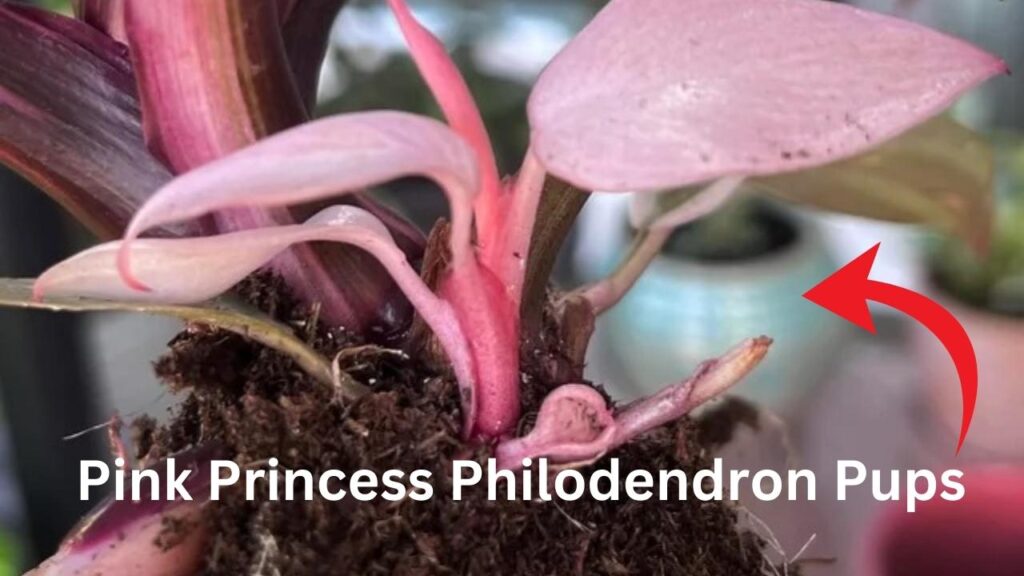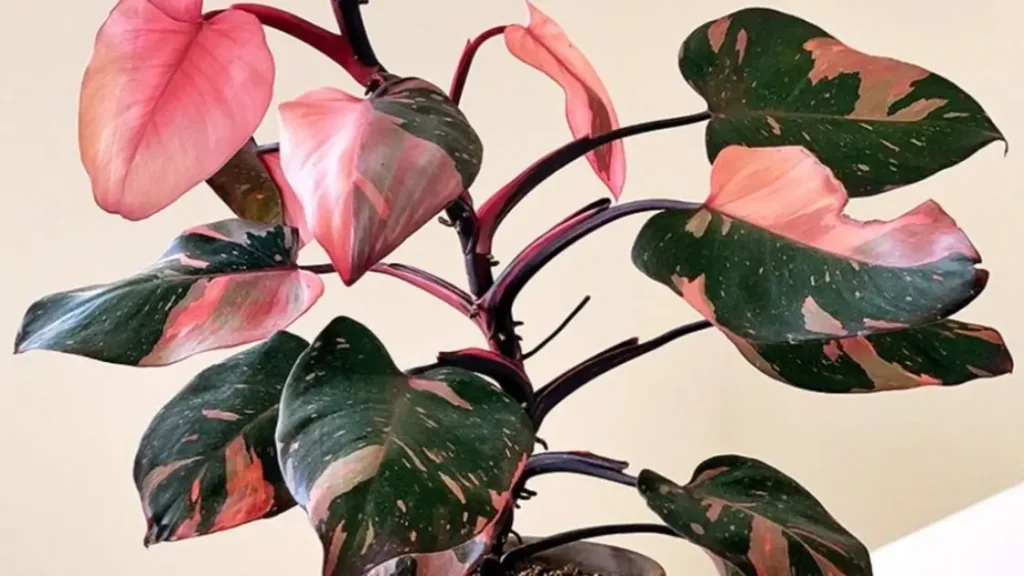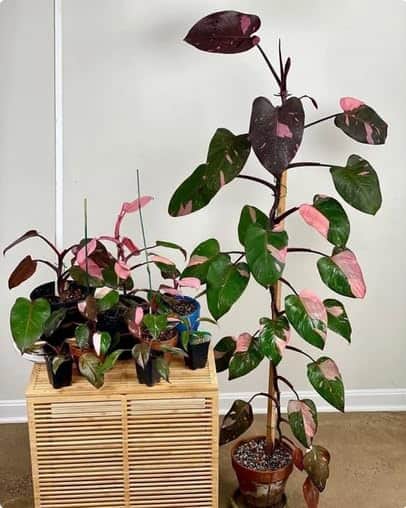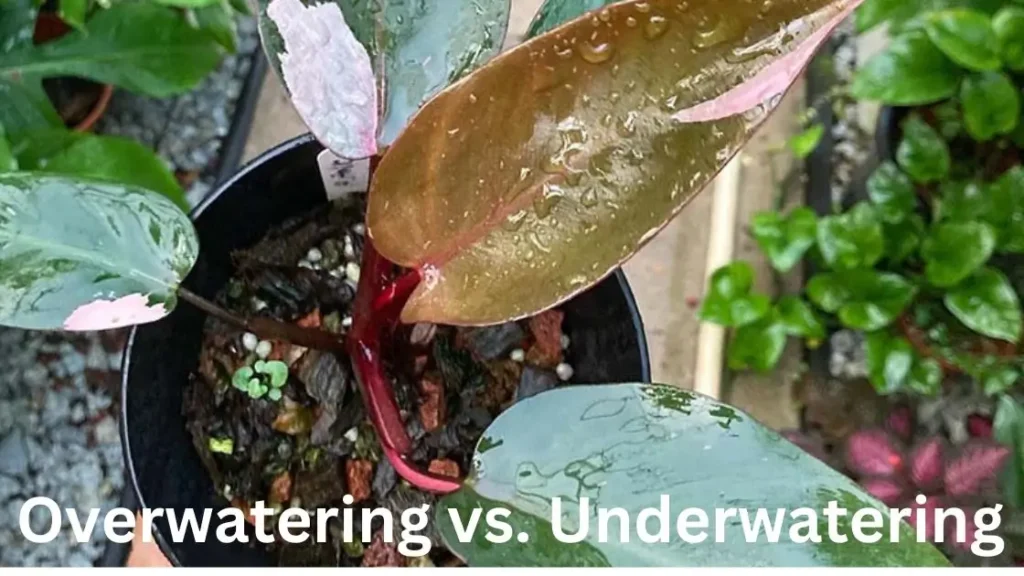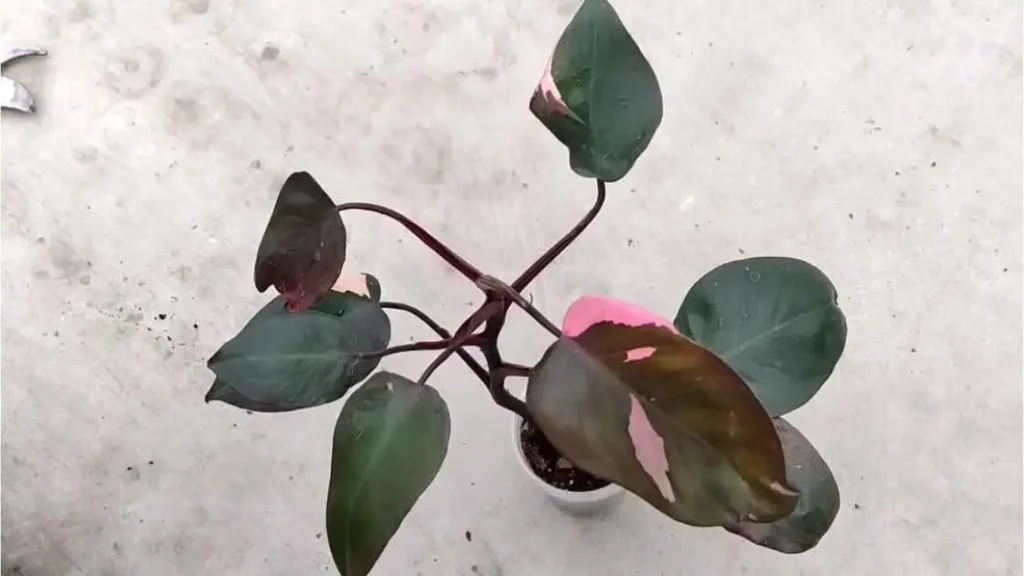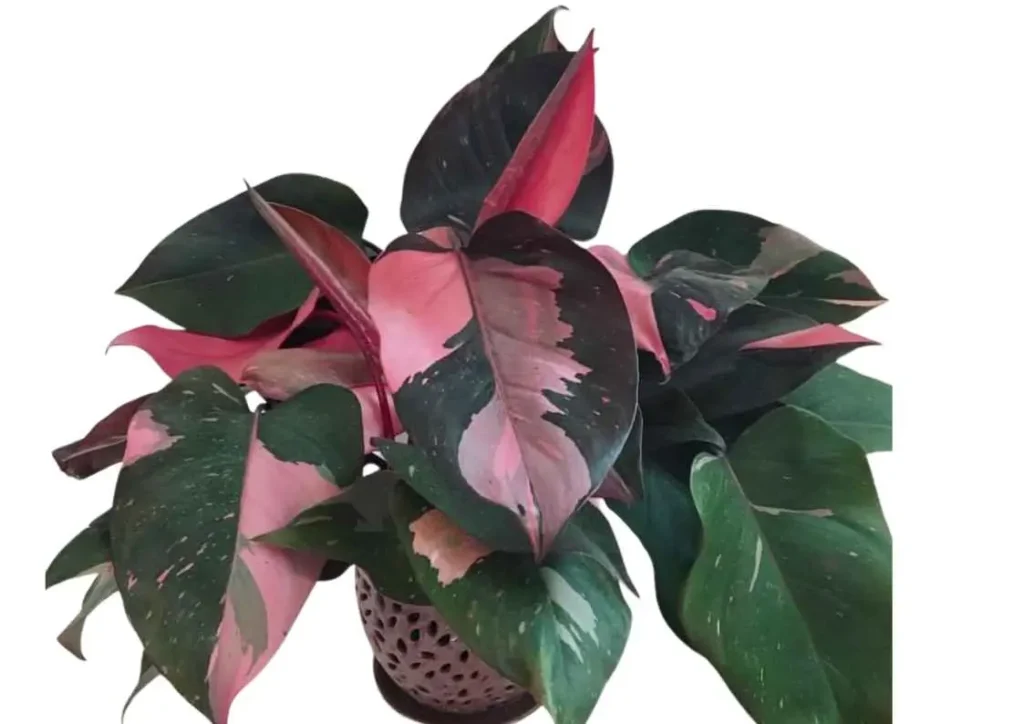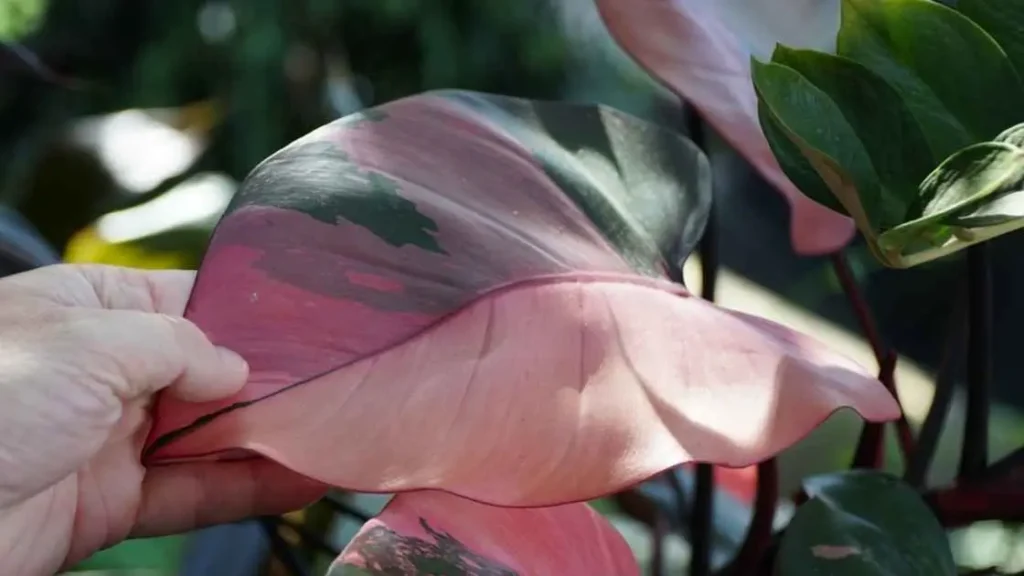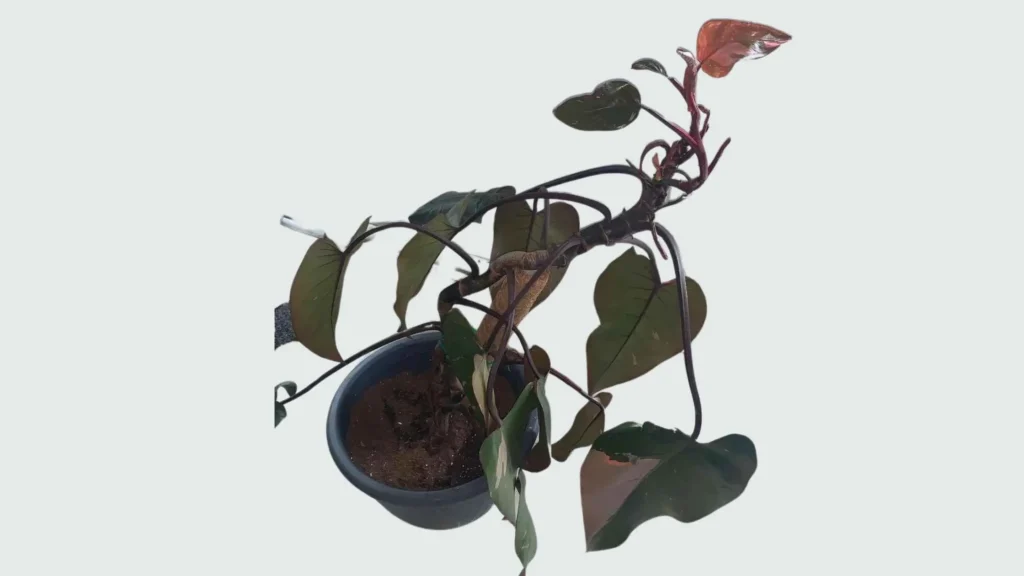Table of Contents
ToggleCaring for a Pink Princess Philodendron can be fun but also tricky, especially when it comes to soil. This pretty plant with pink leaves grows best in a soil mix that feels like its natural home—the rainforest.
But what does that mean? In this guide, I’ll explain everything you need to know about making the best soil for your Pink Princess. We’ll look at where the plant comes from, how to make a DIY soil mix, and why keeping it moist but not too wet is important.
Whether you’re new to plants or already have a few, these tips will help your Pink Princess grow and show off its bright leaves all year long.
Let’s get started and give your Pink Princess the care it needs.
Understanding the Pink Princess Philodendron’s Natural Habitat

Before we talk about soil for your Pink Princess, it’s good to know where this plant comes from. Philodendron erubescens, the species of the Pink Princess, grows in the rainforests of Central and South America. Picture this: the Pink Princess grows in warm, wet places, climbing trees. It likes moist, well-drained soil that is rich in organic matter.
At home, we need to copy this kind of environment. Whether your Pink Princess is in a pot on your shelf or hanging by your window, it still needs the right mix of moisture and drainage. That’s why understanding its soil needs is important.
The Ideal Soil Composition for Pink Princess Philodendron
You might ask: what is the best soil for a Pink Princess? Isn’t any potting mix enough? Well, not really. The Pink Princess is an aroid, like Monsteras and ZZ plants, which need special soil to grow well.
For your Pink Princess, we want a soil that drains well but still holds nutrients. It should let water flow through easily. Here’s the best mix I’ve found:
- 1 part regular potting mix: Use a good-quality houseplant potting mix.
- 1 part orchid bark: This adds structure to the soil and keeps it airy, like the bark the plant would find in nature.
- 1 part perlite: Perlite, a type of volcanic rock, helps stop the soil from getting packed down and helps with drainage.
This mix makes the perfect home for your Pink Princess. The orchid bark and perlite keep the soil airy, letting the roots “breathe.” The potting mix keeps the right amount of moisture. Too much water can cause root rot, and you don’t want that!
Key Soil Amendments and Their Benefits
Let’s talk about why each part of this soil mix is so important. Knowing what each does will help you care for your plant better and even change the soil if needed.
Orchid Bark
If you’ve never used orchid bark, it might seem odd. But for the Pink Princess, it’s perfect. In nature, these plants grow on trees, getting food and water from dead plants around them. Orchid bark copies that by giving the soil structure and letting air in, which helps stop root rot.
Perlite
You’ve probably seen small white bits in potting soil and wondered what they do. Perlite keeps the soil light and fluffy. It stops the soil from packing down and helps water drain well. This keeps the roots from staying too wet, which can hurt the plant.
Coco Coir or Peat Moss
Adding coco coir or peat moss is optional but helpful. These hold water without making the soil too wet. They give the plant time to take in water, and any extra water drains away. This is good if you live in a dry area where your Pink Princess might dry out faster.
pH Levels: What’s Optimal?
Did you know that soil pH affects how well your plant takes in nutrients? For the Pink Princess, you want the soil to be slightly acidic, between 5.5 and 6.5. You can test this easily with a pH tester, which is sold at garden centers or online.
If the pH is too high or low, don’t worry. You can fix it by adding lime to raise the pH or sulfur to lower it. Keeping the pH in the right range helps your Pink Princess get all the nutrients it needs to grow.
How to Prepare Your Own Pink Princess Philodendron Soil Mix
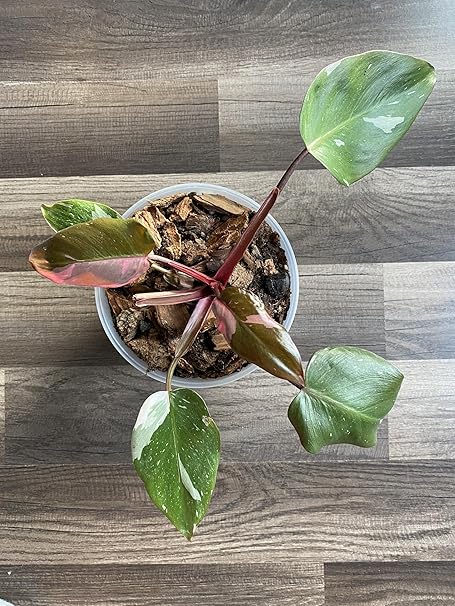
If you like DIY projects, making your own soil mix can be fun. You get to control what goes into your plant’s pot and can change it based on what works best for your plant.
Here’s a simple guide to making the perfect soil mix:
- Gather your materials: You’ll need potting mix, orchid bark, and perlite. You can also get coco coir or peat moss if you want to help the soil hold water better.
- Measure the ingredients: Mix equal parts of potting mix, orchid bark, and perlite. If you’re using coco coir or peat moss, add about ¼ of the total mix.
- Mix it up: In a large container, mix all the ingredients well. This makes sure your plant has the same conditions throughout the pot.
- Store it: If you make more soil than you need, store it in an airtight container. This way, you’ll have extra soil ready when you need it.
This homemade mix gives your Pink Princess the best of both worlds: it keeps enough moisture for the plant but still drains well to stop water from sitting around the roots.
Choosing the Right Pot for Drainage
You’ve got your soil mix ready, but now you need the right pot for your Pink Princess. Choosing the right pot is just as important as the soil. Without proper drainage, even the best soil can hold too much water, causing root rot. No plant owner wants that!
First, always pick a pot with drainage holes at the bottom. This lets extra water drain out, so your soil doesn’t stay too wet. I’ve seen people use pots without drainage, and while it might work for a short time, it’s risky. Roots sitting in water will eventually cause problems.
Best Pot Types for Pink Princess Philodendron
You have a few choices when it comes to pots. Here’s what I suggest:
- Terracotta Pots
Terracotta pots are a classic. They let air and water pass through the pot walls, keeping the soil airy. They also soak up extra water from the soil. The downside? They dry out faster, which can be tough if you forget to water your plants. - Plastic Pots
Plastic pots hold water better than terracotta, so they’re good if you live in a dry area or often forget to water. They’re also light and easy to move. - Ceramic Pots
Ceramic pots look nice, but make sure they have drainage holes. Glazed ceramic pots can hold more water than terracotta, so be careful with watering.
For size, choose a pot about 2 inches wider than the plant’s root ball. This gives the plant room to grow without holding too much water, which could lead to root rot.
How to Repot Your Pink Princess Philodendron
Repotting might seem hard, but it’s important for keeping your Pink Princess healthy. Don’t worry, I’ll guide you through it step by step.
You’ll know it’s time to repot when you see a few signs. The most obvious one is roots growing out of the drainage holes. This means the plant’s roots are too crowded, and it needs a bigger pot. Another sign is slowed growth—if your Pink Princess isn’t growing new leaves like before, it might have outgrown its pot.
Here’s how to repot your plant:
Step-by-Step Guide to Repotting
- Choose the right pot: Pick a pot that’s about 2 inches wider than the current one and has good drainage.
- Prep your soil: Get your well-draining soil mix ready. I like to make it slightly moist before using it, as this helps the plant settle in.
- Remove the plant: Gently take the Pink Princess out of its current pot. If it’s stuck, tap the sides of the pot or loosen the soil around the edges. Avoid pulling on the plant itself to prevent root damage.
- Check the roots: Look at the roots. If they are circling the root ball or bound, gently pull them apart. If you see black, mushy roots, these are signs of root rot. Trim them off with clean scissors.
- Repot: Place the plant in the new pot and fill in around the root ball with fresh soil. Press the soil lightly, but don’t pack it too tightly—you want the soil to stay airy.
- Water thoroughly: After repotting, water your Pink Princess well. Water it until you see water draining from the bottom. This helps the soil settle and the roots make good contact with the soil.
Once repotted, put your Pink Princess back in its usual spot. And that’s it! You’re ready for a new phase of growth.
Watering Tips for the Best Soil Moisture
Watering can be tricky, especially for the Pink Princess. You need to find a balance between keeping the soil moist and not too wet. Let’s break it down.
How Often to Water
The Pink Princess likes the top 1-2 inches of soil to dry out a little between waterings. Don’t let the plant get bone dry, but give it some time before the next watering.
Here’s a simple guide:
- In spring and summer, water once a week.
- In fall and winter, water every 10-14 days as the plant grows slower.
How to Check Soil Moisture
You don’t have to guess when to water. Try the finger test. Stick your finger 1-2 inches into the soil. If it feels dry, water it. If it’s still moist, wait a day or two.
Or, you can use a moisture meter for a more accurate reading. This is helpful if you aren’t sure or if your home’s humidity changes often.
Watering Tips
When watering, do it thoroughly. Pour water until it drains out of the bottom of the pot. This makes sure all the roots are hydrated. Don’t let the plant sit in a saucer of water. Once the extra water drains, empty the saucer to avoid root rot.
Common Soil Problems and How to Fix Them
Even with the best care, problems can still happen. But don’t worry—you’ve got this. Let’s look at some common soil problems and how to fix them.
Root Rot
Root rot is a big problem for plant owners, and the Pink Princess is no exception. Root rot happens when roots sit in wet soil for too long. Without air, the roots start to break down and become soft and black.
How to spot it:
Your plant’s leaves will turn yellow, and the soil may smell bad. When you check the roots, they will be black and mushy instead of firm and white.
How to fix it:
If you catch it early, you can save the plant. Take it out of the pot, cut off the bad roots, and repot in fresh, well-draining soil. Be careful with watering in the future.
Compacted Soil
Over time, soil can become hard, making it difficult for air and water to reach the roots. This can happen if you don’t repot often or if the soil mix doesn’t have enough perlite or other light ingredients.
How to fix it:
If the soil seems hard, repot your Pink Princess in fresh, airy soil. Adding perlite or orchid bark can help keep the soil light.
Fertilizing Your Pink Princess the Right Way
Now that we’ve covered soil and watering, let’s talk about fertilizing. The right fertilizer can help your Pink Princess grow and stay healthy. But too much fertilizer can cause problems.
You might want to give your plant more fertilizer, thinking it will grow faster. But houseplants, like the Pink Princess, do best with just enough. Adding too much can lead to nutrient overload and salt buildup, which can hurt your plant’s roots.
When and How to Fertilize Your Pink Princess Philodendron
Your Pink Princess grows the most in spring and summer. During these months, the plant puts out new leaves and roots. This is when it needs the most nutrients, so fertilizing is important.
During the growing season, fertilize about once a month. I suggest using a balanced liquid fertilizer at half strength. Full-strength fertilizer can be too strong and may cause damage to indoor plants.
In fall and winter, when growth slows, you can fertilize less. You might not need to fertilize at all unless your plant is still actively growing. This can happen if your home stays warm and bright year-round.
Signs That Your Plant Needs Fertilizer
Your plant will show signs when it’s low on nutrients. Watch for these:
- Small, pale leaves: If your Pink Princess has new leaves that are smaller and less colorful, it may need more nutrients.
- Stunted growth: If your plant’s growth slows down a lot during the growing season, it may need a nutrient boost.
On the other hand, too much fertilizer can cause leaf burn (brown, crispy edges) or a white crust on the soil. If you see these signs, stop fertilizing for a few months and flush the soil with water to remove extra salts.
Organic vs. Synthetic Fertilizers
You have options when choosing a fertilizer. People often ask if organic or synthetic fertilizer is better. It really depends on your preference and how much effort you want to put in.
Organic fertilizers, like compost, worm castings, or fish emulsion, release nutrients slowly. They help improve the soil and support long-term plant health. But they can be messier and sometimes smell more than synthetic ones.
Synthetic fertilizers provide a quick nutrient boost and are easier to measure and use. Just be careful not to over-fertilize, as they can leave salt in the soil if used too much.
Seasonal Soil Care
One thing I love about caring for a Pink Princess Philodendron is how much you need to focus on its seasonal needs. Like us, plants go through changes during the year. Adjusting your care based on the season keeps them healthy and happy.
Winter Care
In winter, plants enter a resting phase, and the Pink Princess is the same. During this time, reduce watering and stop fertilizing unless the plant is still growing. Winter also means less sunlight, so check your soil’s drainage. Soil may take longer to dry out.
Remember, indoor humidity drops in winter. Make sure the soil doesn’t dry out too fast. You can use a humidifier or place a pebble tray with water near the plant to keep the air moist.
Spring and Summer Care
Spring and summer are when your Pink Princess grows the most. As the weather warms and light increases, it’s time to start fertilizing and watering more often. These months are also the best time to repot or refresh the soil if needed.
If you’ve been using the same soil for a couple of years, repot with fresh soil to add nutrients and improve airflow.
Final Tips for Long-Term Soil Health
By now, you know the basics of keeping your Pink Princess Philodendron happy and healthy. But what about long-term care? Plants, like us, need ongoing attention to thrive, and good soil is the foundation for that. Let’s go over a few final tips to keep your plant’s soil rich and supportive for years to come.
Soil Refreshment and Repotting
Even the best soil loses nutrients over time. As your Pink Princess grows, it uses the nutrients in the soil. After a while, the soil won’t have the same nutrients it once did. To prevent your plant from “starving,” repot it every 1-2 years with fresh soil.
If repotting feels difficult, try a top-up instead. Remove the top few inches of soil and replace it with fresh, nutrient-rich soil. It’s an easy way to keep your plant happy without fully repotting.
Preventing Soil Compaction
Soil compaction can harm healthy roots. Over time, the soil in the pot can get tight, making it hard for water, air, and nutrients to reach the roots. To avoid this, use a soil mix with perlite, orchid bark, and coco coir to keep it light and airy.
You can also loosen the soil with a small fork or chopstick every few months if it seems compacted. This helps with drainage and keeps the roots from suffocating.
Watch Out for Pests
Soil can also be home to pests that harm your Pink Princess. The most common are fungus gnats and aphids, which can cause problems if not treated. To prevent this:
- Let the top layer of soil dry between waterings, as fungus gnats like moist environments.
- Check the soil often for pests. If you see tiny flies or sticky residue, use neem oil or a natural pesticide.
- If pests are present, change the soil and treat the plant before replanting it in fresh, well-draining soil.
Conclusion
Here is a simple guide to help you care for your Pink Princess Philodendron. You now know how to create the right soil, repot your plant, and help it grow strong. Soil is more than just dirt—it helps your plant grow and stay healthy when done right.
I hope this guide made caring for your Pink Princess easy to understand. Now, you can feel more sure about looking after your plant. Plants may be a little tricky at times, but with patience and the right care, your Pink Princess will show off its beautiful pink leaves for many years.
FAQs
What is the best soil for Pink Princess Philodendron?
The best soil for a Pink Princess Philodendron is one that drains well. It should be similar to the soil in rainforests. Use 1 part potting mix, 1 part orchid bark, and 1 part perlite. This helps the soil drain and hold enough moisture for the plant to grow well.
Can I use regular potting soil for my Pink Princess?
Regular potting soil alone holds too much water, which can hurt your plant’s roots. To make it better, mix potting soil with orchid bark and perlite. This will give your Pink Princess the drainage and air it needs.
How often should I water my Pink Princess Philodendron in this soil?
Water your Pink Princess when the top 1-2 inches of soil are dry. In spring and summer, water once a week. In fall and winter, water every 10-14 days when the plant grows slower.
Does Pink Princess Philodendron need acidic soil?
Yes, Pink Princess Philodendron likes soil that is slightly acidic. The pH should be between 5.5 and 6.5. You can test the soil’s pH and adjust it with lime (to raise it) or sulfur (to lower it).
Why is good drainage important for Pink Princess Philodendron?
Good drainage stops water from staying in the soil, which can cause root rot. Perlite and orchid bark help the soil stay airy and let extra water drain out, keeping the roots healthy.
How do I know when to repot my Pink Princess?
You should repot your Pink Princess when you see roots coming out of the drainage holes or if the plant stops growing. This usually happens every 1-2 years. Use a slightly bigger pot with fresh soil that drains well.
Related
Discover more from Pink Philodendron
Subscribe to get the latest posts sent to your email.


